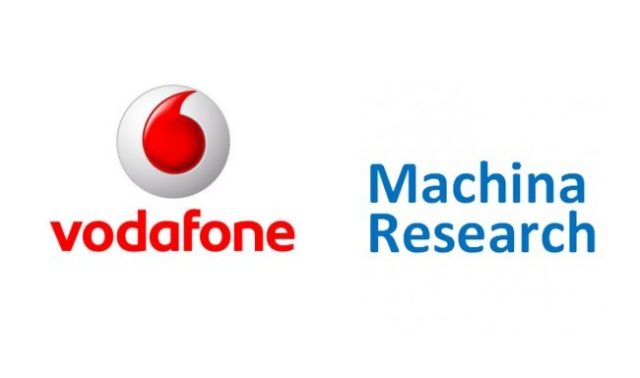Vodafone is the CSP best positioned to take advantage of the global M2M market opportunity between now and 2020 according to a new study from Machina Research.
Specialist M2M research firm Machina Research today revealed the results of its 2012 M2M Benchmarking Study, which found that Vodafone was the communications service provider (CSP) best placed to take advantage of the €714 billion global opportunity presented by machine-to-machine communication.
In compiling the study Machina Research rated major M2M CSPs in six key areas that will determine their future success: Pedigree, Platform, Place, Partnerships, Process and People. Based on ratings across each of these six ‘P’s, Vodafone was the top-ranked CSP.
Commenting on the result, the study’s author Matt Hatton said: “Machina Research rates Vodafone as the CSP with the best potential to exploit the massive opportunities presented by machine-to- machine. In particular, its global scale gives it a substantial competitive differentiator. While I wouldn’t say that they are streets ahead of the competition, Vodafone was our clear winner. However, the race for second spot was very hotly contested between AT&T, Deutsche Telekom, Orange, Telenor and Verizon, with little to choose between them. Each has strengths and weaknesses”.
Ultimately second place went to Deutsche Telekom which was praised for its partnership strategy, has a natural advantage in the M2M world with an in-house systems integrator in T-Systems, has good geographical coverage courtesy of last year’s alliances with Orange and Telia Sonera and its US presence, plus the group is focusing a lot of attention on building up M2M capability.
The aim of the study is to identify which CSPs are set to prosper in the future, rather than simply identify those which are succeeding today.
AT&T and Verizon both have M2M installed bases significantly bigger than Vodafone: 12 million and 9 million respectively.
As Hatton explains: “It is important to note that Machina Research’s ranking is forward-looking. It’s an indicator of who we believe is best set for future success. Of course we take account of historic experience and success by AT&T, Telenor, Verizon and the like in our “Pedigree” category, but it is only one element in this most nascent of markets”.
Vodafone’s future success will owe much to its scale and geographical coverage: by 2020 its own footprint will cover 600 million addressable cellular M2M connections, second only to Deutsche Telekom, courtesy of its continuing presence in the US. The Vodafone figure grows to 1.8 billion when we include partner operators such as Verizon Wireless, whereas the comparable figure for DT is just 1.1 billion. As a result, Vodafone achieves comfortably the highest ranking in the “Place” category.
According to earlier research from Machina Research, “M2M Global Forecast and Analysis 2010-20” (October 2011), there will be 12 billion M2M connections on the planet by 2020, generating a revenue of €714 billion. Assuming the same geographical footprint as today.
Machina Research’s overall ranking is far from simply an analysis of longevity and geographical footprint. It also involves critical evaluation in a number of other areas. It includes an appraisal of the CSPs’ software “Platforms” in effectively managing large numbers of M2M connections. It also assesses the success of each of the CSPs in building “Partnerships”, a critical factor for success in M2M. Vodafone and Deutsche Telekom have been particularly strong here. The “Process” category looks at a variety of practices involved in the supply of M2M services including application development, device certification, client support and systems integration. AT&T, Deutsche Telekom, Telenor and Vodafone scored highly here. The final category is “People” which looks at the CSPs’ organisational structure and general fitness for addressing the M2M opportunity, e.g. through the establishment of dedicated M2M business units. Here AT&T is rated as the most sophisticated.
Summarising the findings, Hatton comments: “None of the CSPs has a monopoly on best practice in all of the categories. Each has room for improvement. Each also has particular advantages due to their company structure or approach that can give them a lead or allow them to differentiate. Above all, however, each of them can learn from the others.”
www.machinaresearch.com










